32 scary but common dog problems
There are lots of dog problems which strike fear into owners whether medical, behavioral or simply due to daily living
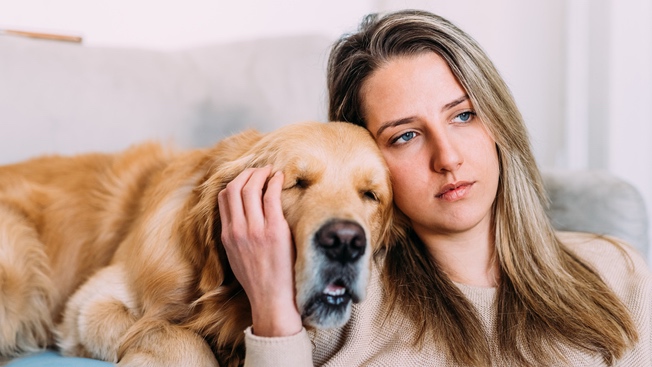
Dogs are wonderful pets but that doesn’t mean they don’t have the capacity to scare you. Even the most mild-mannered of canine companions are capable of making you shake with fear – but not for the reasons you may immediately think.
Instead, dogs can be scary because they have problems. Some are big. Some are small. Some are easily resolved. Others require a trip to the vet. But each one is sure to cause concern because, at the end of the day, we love our pooches dearly and don’t want them to come to harm.
So let’s take a look at 32 scary but common dog problems in the hope that we can help you sleep a little better at night.
32 scary but common dog problems
Noise phobia
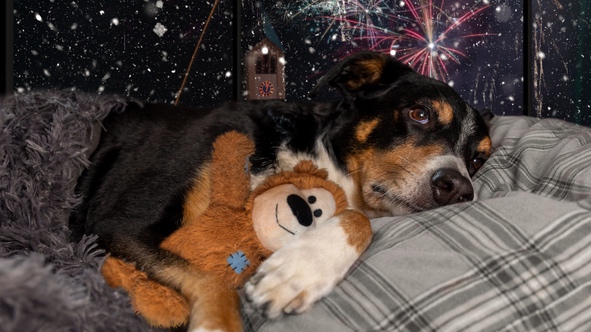
Noise phobia can be triggered by all kinds of loud sounds but generally you will find your dog is spooked by fireworks or thunderstorms. It can be scary to see your dog reacting badly to noises such as these, especially because it can cause a panic attack that can last anything from a few minutes to a few hours. But you can help to calm a pooch with medication such as trazodone and alprazolam or with calming treats. Giving your dog a safe environment helps too.
Cognitive dysfunction

Cognitive dysfunction is common but that doesn’t mean it’s any less scary when it presents itself in your dog. It’s more prevalent within older dogs aged eight and over which means it’s a key sign of seniority. Symptoms include anxiety, changing sleep-wake patterns, behavioral changes and forgetfulness. You won’t be able to cure cognitive dysfunction but brain-boosting supplements can help and it’s always a good ideal to mentally stimulate your dog with games and puzzles.
Hip and joint issues

Hip dysplasia is a genetic condition that is generally diagnosed when puppies are between six and 12-months-old. It can be treated medically or through surgery but it’s a very painful ailment in which the hip joints fail to properly develop. More prevalent among larger dogs, you will tend to find breeds such as German Shepherds and Golden Retrievers suffer most. You’ll likely notice it when dogs become stiff, find it hard to lie down, limp or become resistant to exercise.
Separation Anxiety
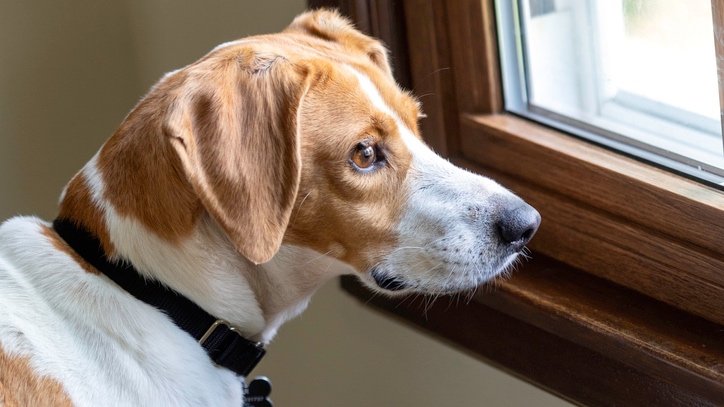
It’s scary when your dog appears to be in great distress when you arrive back at the house after being away even for a short amount of time. You may notice signs that your dog has tried to escape or has urinated and defecated. You may find your dog is trembling, pacing and panting. And all of these simply mean your dog has become distressed because you’ve been apart from them. The answer is to improve your dog’s confidence that you will return and keep them busy while you’re away.
Get the best advice, tips and top tech for your beloved Pets
Kidney diseases
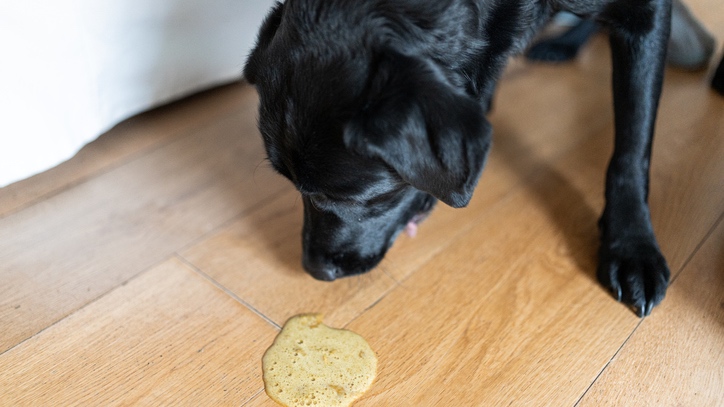
Kidney failure is frightening because it has serious repercussions. It will mean that your dog is unable to maintain hydration leaving them very thirsty and it will also mean they are urinating more. You will find that dogs with kidney disease will lose their appetite and they will also begin to lose weight and often vomit. It’s best to seek the advice of a vet if you spot any signs of kidney disease so that it can be treated. Kidney disease can be genetic.
Kennel cough

If your dog is coughing, sneezing and suffering from other respiratory problems then there’s a strong chance they have caught kennel cough, particularly if they have been around other dogs. It’s spread through droplets from an infected dog coughing, sneezing or sharing water bowls and if you suspect a problem, see your vet right away to carry out a full physical assessment. Most dogs recover within a couple of weeks so allow them to rest as best they can.
Barking

Barking can be scary – it’s a loud noise that startles and you can’t always tell why a dog is doing it. Usually it’s out of boredom and frustration or because they are scared or anxious. In some cases, it’s merely genetic – there are dogs who are literally born to bark. By reducing frustration, keeping a dog mentally and physically active and getting to the root cause of anxiety will help. You can also allow dogs to chew and sniff which boosts endorphin levels.
Matted fur

All dogs can get knots and tangles in their fur. Longer-haired, curly-haired and silky-haired dogs are also prone to matting. It’s painful because the fur has wrapped around itself and built up over time. Matted hair can also cut circulation to your dog’s skin and cause hematomas. Regular brushing is the best way to prevent matts. You should also bathe your dog. In extreme cases, matted hair may need to be trimmed out but a professional groomer will be able to help with that.
Constant tongue hanging
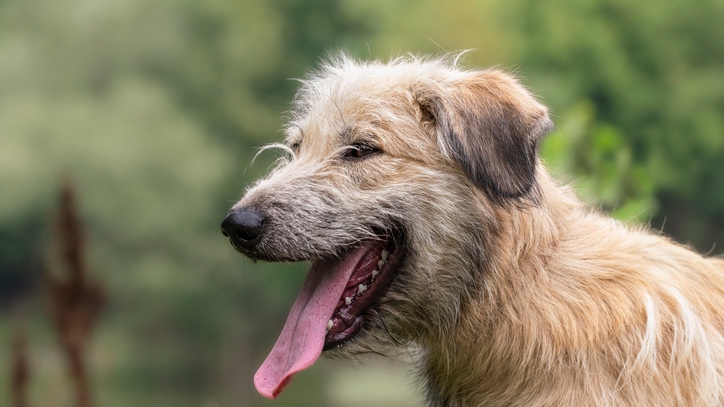
Is your dog’s tongue sticking out all of the time? At first, it seems cute and goof-like but then you realise it may be a sign of a health condition called tongue hanging syndrome. The longer a tongue hangs out of a dog’s mouth, the more likely it is to dry out. This can cause pain as well as cracking and bleeding to the tongue. It can also increase the likelihood of dehydration so be sure to take your dog to the vet for a full checkup. They can diagnose potential neurological disease or physical problems.
Leash pulling
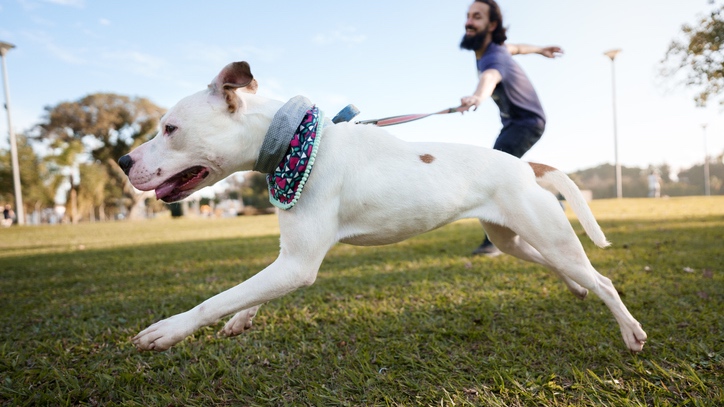
You don’t want a dog to pull on a leash because it not only makes walks rather uncomfortable, it’s also potentially dangerous. It puts pressure on a dog’s neck and can also lead to problems with a pooches’ eyes and ears because of increased pressure. There is a risk of thyroid gland damage too so work on good leash control. Spend a lot of time at home training a dog and stop walking when they pull. Use positive reinforcement, consider a longer lead and always be patient.
Chewing
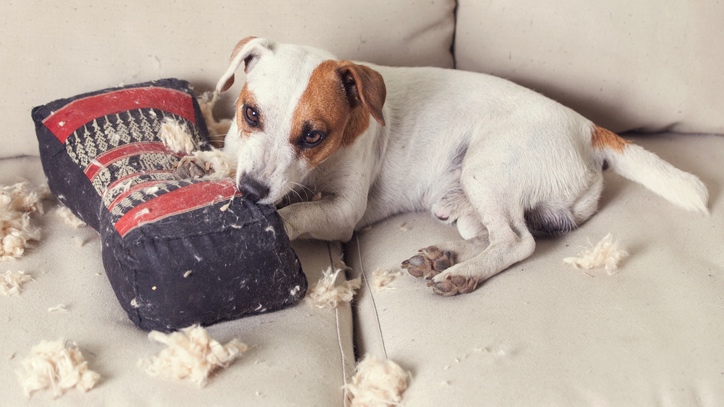
Dogs love to chew but it can be scary if you’re seeing them chew pretty much everything in sight, leaving you worrying that they may be doing themselves as much harm as your furniture, clothes and other belongings. In some cases, they may be teething, in which case you can give them a teething toy. Dogs can also chew out of anxiety or just to catch your attention. There are dogs who simply love eating things that aren’t food, though. It’s called Pica and needs treatment.
Fear of strangers

Some dogs are fearful of strangers and that’s a scary problem because you’re never quite sure where it’s going to lead. You’ll want to calm a reactive dog when they encounter people they don’t know to prevent them from over-reacting, perhaps barking too loudly or even nipping and biting. Giving your dog space and building routine into a canine’s life helps, as does the rewarding of good behavior. Once resolved, you’ll be less worried about inviting people around.
Fleas

Dogs get fleas. It’s very common and it’s scary because they can be harmful to your pooch and infest your home. Preventing fleas in the first place is a good step so regularly check your dog for fleas and flea eggs and make sure carpets and bedding are regularly cleaned. But there are plenty of flea treatments if the pesky parasites do make their mark on your pooch. Fleas bite, cause irritation and make dogs itch so eradicating them is something you just have to do.
Digging
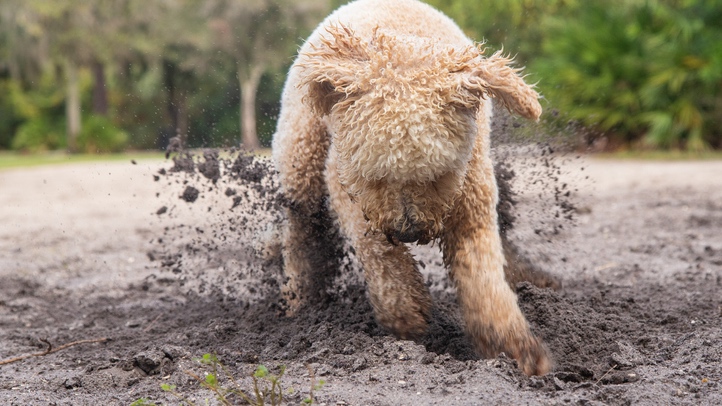
If you see your dog digging in the yard, it can be very alarming. What if your pooch actually digs so much, they end up creating a tunnel which allows them to escape when you’re not watching? Some breeds will dig more than others so they’re often only acting on instinct but digging can also be due to boredom and anxiety – if so, then there’s a chance you can stop it. In any case, good distraction tactics will work a treat to make sure your dog is sufficiently mentally and physically stimulated.
You might want to read our guide on how to stop a dog digging.
Scared of the vets
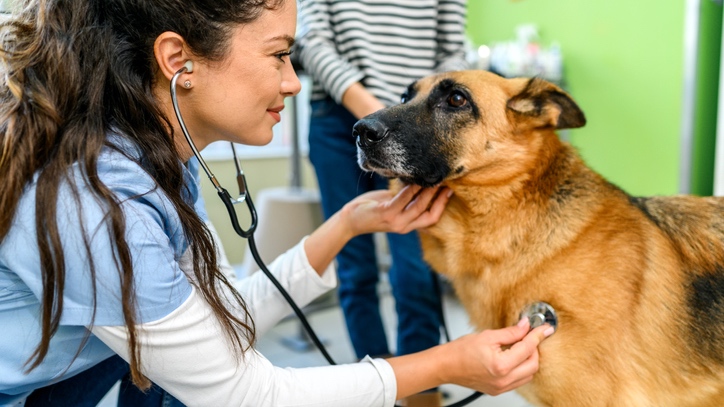
Some dogs just don’t like visiting the vets and that’s a problem because it’s in their best interest to get professional help. It can be managed but it’s not easy – sometimes it’s because they are associating past experiences such as painful jabs with the vet’s practice or it’s down to them suffering from illness or pain which is making them wary of being poked, prodded and touched. A gentle approach is best, showing your dog that they are being looked after.
Whining and whimpering

Whining can be a way of seeking attention or greeting you. It can also be a submissive sign when meeting unknown dogs and other people. It becomes more scary when you realise that whining can be a sign of anxiety or pain, too, and that is why it’s important to work out the cause with a trip to the vet. If it’s due to distress there will tend to be other accompanying symptoms, though, such as trembling or panting so keep a lookout for those.
Howling
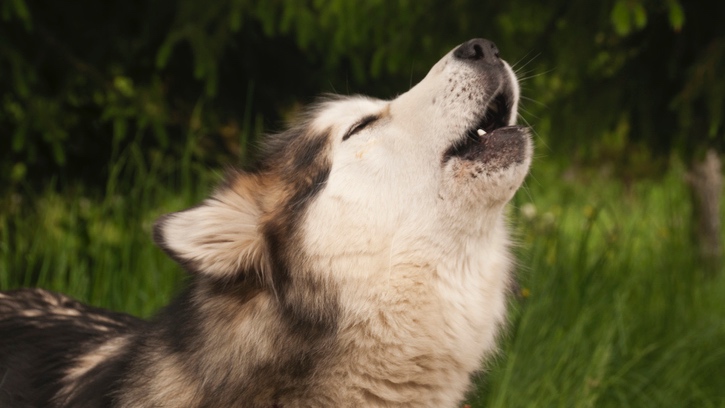
Howling is usually nothing to worry about. It’s a form of communication that is ingrained in our dogs. It can be a way of letting you know they’ve made a discovery or to show that they are alert to their surroundings, ready to act if needed. Howling can be a protective measure, too, but there is a darker side. Sometimes dogs howl because they are ill or have been left alone for too long. So look out for the circumstances surrounding a howl to see if you can work out the cause.
Obesity

Just as in humans, obesity is a common problem in dogs. If you have an overweight dog then you need to put them on a diet and make sure they are eating healthily. Portion control helps as does the avoidance of dishing out treats too frequently. But it’s also important that a dog is getting sufficient exercise to shed the pounds. Carrying extra weight can lead to a number of conditions such as diabetes, heart disease, arthritis and, in some cases, cancer.
Pacing
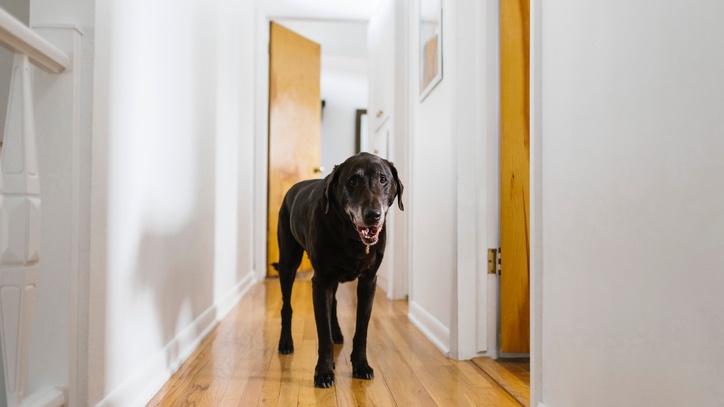
When a dog is pacing around, walking from one spot to another over and over again, you instinctively know there’s a problem. After all, they’re not like Sherlock Holmes pondering a mind-bending problem and hoping the movement will lead to some clarity. More often than not a pacing dog is feeling stressed or agitated or even having a panic attack so do all you can to calm your pooch and resolve this behavioral response as quickly as possible. If it’s persistent, contact a vet.
Tucking tail between legs
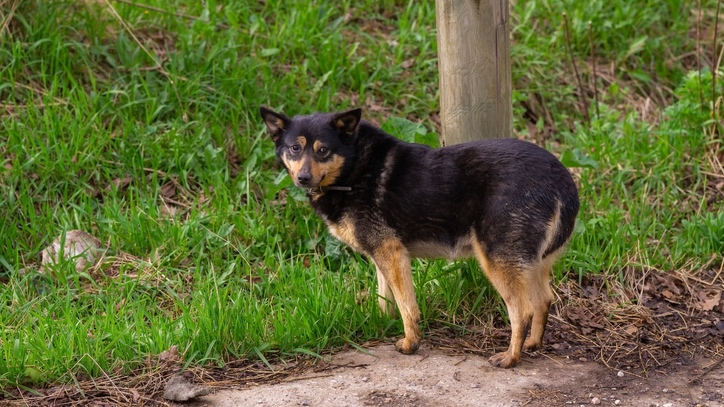
A dog’s tail is expressive so if you notice it is being tucked firmly between its legs when the pooch is in the presence of a stranger or another dog then you will know straight away that the pooch is feeling fear. If the tail is being held very close to the stomach then it’s an even greater sign of distress as the dog becomes ever more submissive. There are other reasons – a damaged tail being among them – but fear is usually the main cause of a tucked tail.
Staring
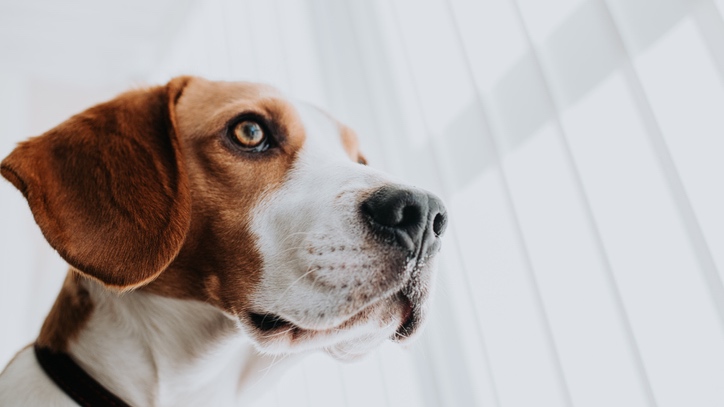
Seeing a dog staring with narrow eyes is likely to make most people wary. It is a surefire sign that your pooch is feeling aggressive so you need to try and calm down a potential situation. The natural eye pose is for a dog’s eyes to be relaxed and blinking so any departure from that is cause for concern. Likewise if a dog is staring with its eyes wide open then that is a sign that your dog is frightened of something. Again, you need to try to take appropriate action.
Jumping up

Dogs like to jump up to catch someone’s attention but it can be frightening to some people. Not everyone shares the enthusiasm of a dog seeking to greet them (and it can also be harmful to the elderly and very young children) so it's a problem that needs to be tackled. The best way to deal with this issue is to cause a distraction and show your dog that there are boundaries they cannot cross. Usually ignoring a jumping dog means they soon get the message that it’s not acceptable.
Dry skin

Dry skin on dogs can cause itching and soreness and it needs to be tackled. Common signs are red and irritated patches as well as some smell and hair loss. Allergies, flea infestation and yeast overgrowth are common causes but dogs may also be suffering from bacterial infection of the skin. It’s a good idea to visit a vet for advice on the best treatment so that the problem can be appropriately resolved. You can also moisturize your dog’s skin to keep it hydrated.
Inappropriate poops
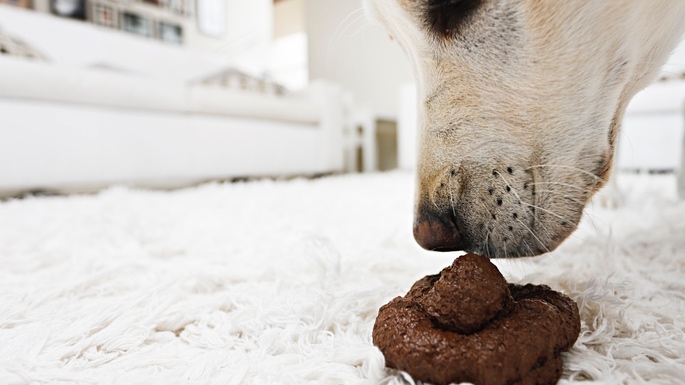
Dogs have got to poop and urinate but preferably you’d potty train them to do so outside. Inappropriate pooping and urination happens in unwanted spots such as inside your home or away from a designated area. Incontinence or doggy dementia can be the cause, more so if you have an older dog. But if it’s just out of bad habit then you can retrain them to poop and urinate in the place you’d prefer using positive reinforcement in the guise of treats or praise.
Shedding

Lots of dogs shed, some much more than others (there are no dogs that don’t shed at all, contrary to what you may have heard). But there are also occasions when shedding is symptomatic of an underlying problem such as allergies, skin infection, autoimmune conditions and parasites. One of the ways of keeping on top of a shedding dog is to regularly brush their coat to remove as much excess hair as you can. You should also feed dogs with a high quality diet to ensure their coat is healthy.
Dog dandruff
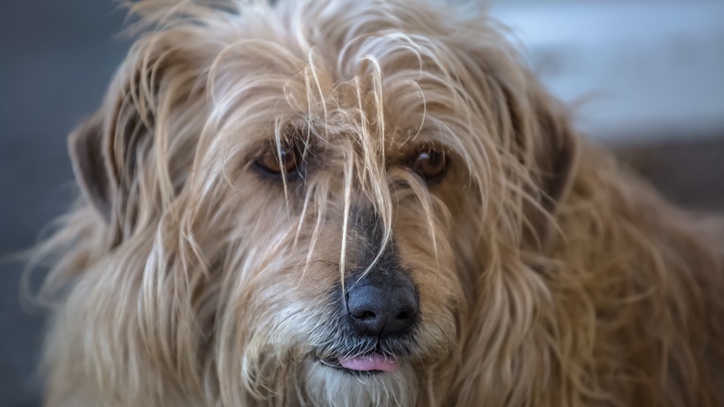
If you spot small white flakes on your dog’s fur or if you’re finding them around your home then chances are your dog has dandruff. It’s usually caused by a dry environment, poor diet, allergies and illness or Seborrhea, the latter being a condition in which the sebaceous glands produce too little or too much sebrum. It’s also possible to strip a dog’s skin of its natural oil through excessive grooming. In any case, you should seek the advice of a vet.
Begging

Dogs may beg for food and it’s rather scary because you may believe that they’re really hungry because you’re not feeding them enough. But if you give in and start giving them food from your plate two things happen: you encourage them to continue and you go hungry instead. Sometimes there are medical reasons for an insatiable appetite but other times they just need some more consistent training. It’s always worth learning how much you should feed a particular dog breed too.
Biting
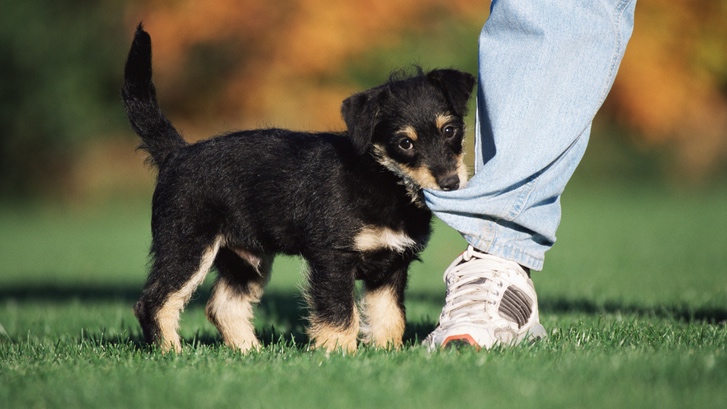
Dogs can bite out of fear, play and pain. They can also bite because they’re being protective. It’s a problem that needs to be resolved, especially if it’s happening with strangers, because it could potentially injure someone. Identifying biting patterns is the first step, the next is to teach dogs to be more gentle by showing a dog you have been hurt after a bite. Having toys on hand can help to redirect a dog’s mouth elsewhere while good socialization is worth its weight in gold.
Smelly breath
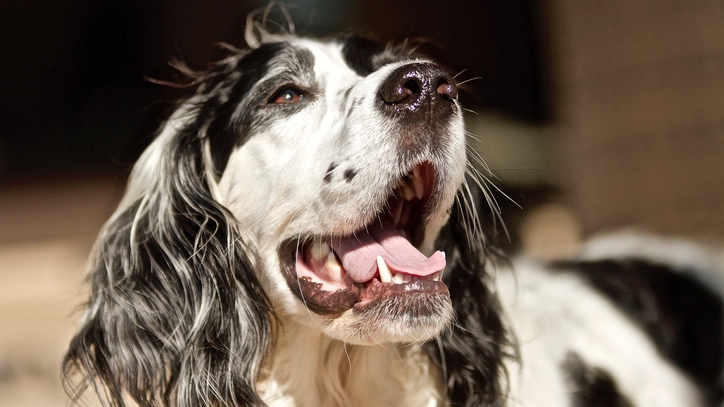
So your dog has gone to give you a big slobbery kiss and, eurgh, what’s that smell? Your pooch’s breath is super stinky! It’s not always down to something they’ve eaten either. Bad breath is often a good indication of advanced dental disease and, if you’re dog is having trouble eating, pawing at his or her mouth and drooling, then this is the most likely cause. Regular brushing can help prevent such problems but once they’ve surfaced, then a trip to the vet for professional dental cleaning and potential teeth removal is the only answer.
Sharp claws
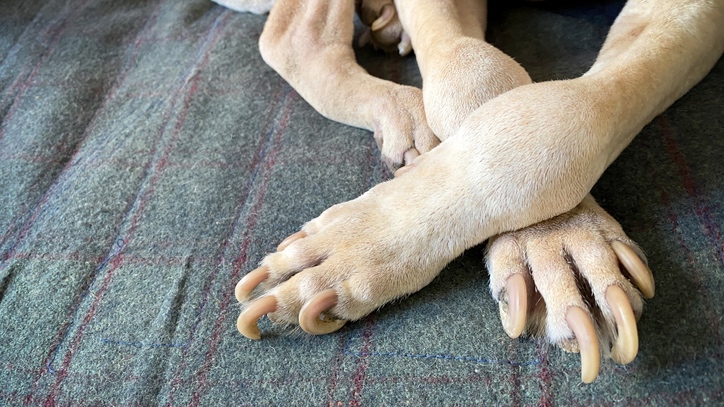
Knife-like nails spell disaster for your carpets and furniture. They can also scratch your skin and potentially get caught on objects which would be very painful for your pooch. A good way to tell if nails are too long and sharp is to see if the nails are touching the ground. If not, they’ll need to be tackled. It’s easy enough to do with the right tools. The main thing is to avoid cutting them too short. If your dog doesn’t like having their nail trims, lavish them with treats and praise.
Humping
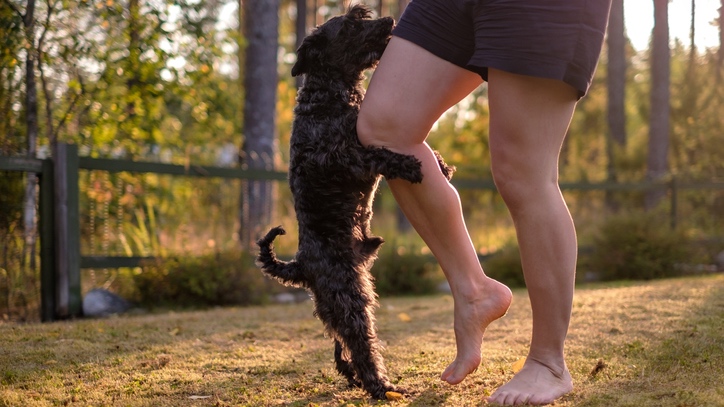
Dogs hump when they’re overstimulated and that is harmless enough but if they are doing so because they are bored, stressed or anxious or engaging in sexual behavior then you may feel worried. Spaying or neutering dogs can help but understanding why a dog is humping is crucial. There are some medical conditions which can cause this common dog behavior including skin allergies, fleas and urinary tract infections so don’t ignore the problem.
Fear of stairs

Stairs can be intimidating for puppies, especially those which are small. It’s scary because you don’t want your pet to hurt themselves or have an accident as they make their way up and down. By getting involved in teaching your pooch how to make use of stairs, you can remove a lot of the fear and have your dog running up and down in no time. Start at the bottom and keep working upwards with some tasty treats in hand and your dog will soon begin to understand what it takes.

David Crookes has been a journalist for almost 30 years and he has written for a host of magazines, newspapers, websites and books including the World of Animals Annual, BBC Earth, Live Science, The Independent and Tom’s Guide.
Born in England, he lives with two cats but he’s also keenly interested in the differences between the huge number of dog breeds – in fact, you can read many of his breed guides that he’s written in collaboration with vets here on PetsRadar.
With a lifelong passion for technology, too, he’s always on the lookout for useful devices that will allow people to keep their pets happier and healthier, and provide them more time to spend together.
David has a degree from Durham University, as well as postgraduate diploma in journalism from the University of Central Lancashire.
